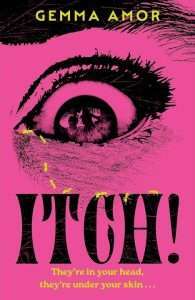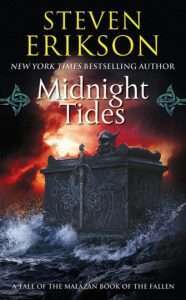Adrian Collins's Blog, page 17
June 14, 2025
REVIEW: Hostile by Luke Scull
Hostile, the debut horror novel from grimdark fantasy author Luke Scull, delivers a deceptively deep psychological thriller on par with the best work of Catriona Ward or Gemma Amor.
 Hostile opens at the Longleat Safari and Adventure Park in the Wiltshire countryside of southwest England. Savannah Grace is a new animal keeper at the animal sanctuary, home to an assortment of creatures from around the world, including a rare silverback gorilla. However, there is trouble in Savannah’s wildlife paradise when a chimpanzee goes missing and is discovered later with blood-red eyes and a sudden, uncharacteristic thirst for violence.
Hostile opens at the Longleat Safari and Adventure Park in the Wiltshire countryside of southwest England. Savannah Grace is a new animal keeper at the animal sanctuary, home to an assortment of creatures from around the world, including a rare silverback gorilla. However, there is trouble in Savannah’s wildlife paradise when a chimpanzee goes missing and is discovered later with blood-red eyes and a sudden, uncharacteristic thirst for violence.
The chimpanzee incident is just the start of an affliction that spreads rapidly across animal life in Wiltshire, affecting everything from insects and spiders through domesticated pets, whose unexpected violence catches their owners especially off guard.
What is the origin of this abrupt change in animal behavior? Could they be infected with a newly mutated virus? Or is there a supernatural force at play taking control over these otherwise innocent creatures?
Although Hostile opens with Savannah Grace, the main protagonist of the novel is John Sharrock, a fantasy author who has just scored his first major book deal. But the pressure of writing a bestselling novel proves too much for John, whose mental health takes a significant toll, alongside the relationship with his beloved wife:
‘I lost myself,’ John said. ‘I became someone else. I lost sight of what was important.’
I honestly thought I knew where Luke Scull was heading with these various plot threads, and I was prepared to write a review saying that Hostile is an entertaining thrill ride but too predictable. Then the last quarter of the book knocked me senseless. I wasn’t prepared for the psychological depth (and associated plot twists) that emerged in the latter part of the book. By the end, Hostile left me genuinely shaken up in a way that few books have done before.
Altogether, Hostile is highly recommended for fans of psychological horror. Luke Scull’s first entry in the horror genre proves to be an expertly crafted, emotionally raw journey into the dark recesses of the soul. Although Hostile is Scull’s first horror novel, I hope it won’t be his last.
Read Hostile by Luke ScullThe post REVIEW: Hostile by Luke Scull appeared first on Grimdark Magazine.
June 13, 2025
REVIEW: Attack on Titan Season 2
Mysteries are only unlocked through pain. Knowledge only gained by sacrifice. Wins achieved by stepping over the bodies of comrades and friends on a blood-soaked battlefield.
This is the mantra of Attack on Titan: Season Two. The finest written T.V. show I’ve ever seen marches on with a harrowed look in its eyes and the weight of triumph on its shoulders.
“You’re not soldiers. You’re not warriors. You’re just murderers.”
Season one of Attack on Titan centered on the cat and mouse game between the Scouts and the Abnormal Titans. Season two continues that, but instead of cat and mouse, it feels like a brutal chess match where pawns, bishops, knights, and rooks are being taken off the board in a furious crescendo.
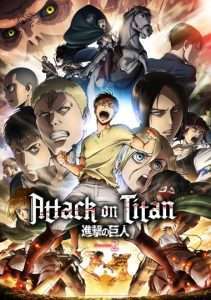 We start off with the aftermath of season one’s thrilling climax, which leaves us picking up the pieces and asking questions. Before we can get those answers, however, new threats appear. More Abnormals, more death. The plot juggles all the pieces in a dazzling dance. Never does a ball get dropped, merely thrown in the air to hover for a moment before it crashes down upon the characters with thunder.
We start off with the aftermath of season one’s thrilling climax, which leaves us picking up the pieces and asking questions. Before we can get those answers, however, new threats appear. More Abnormals, more death. The plot juggles all the pieces in a dazzling dance. Never does a ball get dropped, merely thrown in the air to hover for a moment before it crashes down upon the characters with thunder.
Season one set up the world and some of its intricacies in a gorgeous fashion. The tension was high and the losses even higher, but we’re starting to see the game, the players, and the stakes. On top of that, the animation may be the best piece of it, which is truly saying something. It’s a collection of greatness in every metric.
Season two of Attack on Titan steps every facet of it up.
The action and animation is as breathtaking as ever. It’s intense, it’s bloody, it’s a breath away from killing and dying. I said breath-taking two sentences ago and I’m going to say it again. It. Is. Breath-taking. There’s no other word to describe it.
Just as heart-stopping is the mysteries. Attack on Titan is absolutely loaded with twists and mysteries, and when one is solved, two more come about. Everything driving the mysteries is logical and will be explained (which is the best kind) and the ones we do get solved are jaw-dropping. The plotting is genius level, comparable to only a few works I’ve read and none that I’ve seen in television before. While we do get a few mysteries from season one answered, season two introduces to even more, forcing intense and immensely enjoyable ruminations.
It is interesting, however, to talk about Attack on Titan on a plot versus character level. In some ways, Attack on Titan reminds me of Black Company or Malazan: Book of the Fallen. People die in large scales and you have to pay attention to understand the story at large. It’s confusing, and the creator of these worlds will blatantly show you foreshadowing that won’t make sense until later. In the meantime, the individual characters draw you in with just the right touch. Brooding soldiers, sarcastic banter, hopes and ambitions. Attack on Titan, Black Company, and Malazan strike these same chords. I don’t think it’s for everyone, and with the gore and viscera surrounding it it’s for even fewer, but if you’re a grimdark fan who likes animation, I don’t even really know why you’re reading this review instead of rushing to get a Crunchyroll subscription and turn it on.
“As long as we continue to fight, we are not defeated!”
Ultimately, Attack on Titan is as close to a flawless show as I’ve ever seen. Season two is a phenomenal entry into the series, but I do have a few nitpicks. There’s not a ton of room for bantery-dialogue. The pacing is ever so slightly odd. The climax feels a touch cloying with its resolution. Some of the newer characters aren’t as fully palatable as the old ones.
Reader of this review, I had to dig deep for those nitpicks. They are so minor, so forgettable, that it’s essentially not worth mentioning. If you like grimdarks, blood, animation, foreshadowing, or just gorgeous writing, I implore you to watch Attack on Titan.
The post REVIEW: Attack on Titan Season 2 appeared first on Grimdark Magazine.
June 12, 2025
REVIEW: Furiosa
Furiosa: A Mad Max Story is the prequel to Mad Max: Fury Road, one of the best movies of the 21st century as well as arguably the best of the Mad Max franchise. The movie was originally supposed to be filmed back to back with Fury Road, starring Charlize Theron, but events resulted in it being filmed a decade later with a new actress. The recasting and the long wait time may have contributed to its failure at the box office. There is also the question of how much of a niche property a Mad Max movie is without Mad Max.
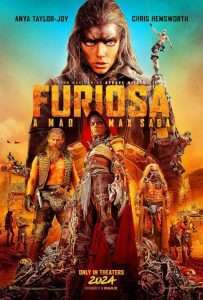 The premise is that Furiosa (Anya Taylor-Joy) is a young woman living in a desert oasis when she’s kidnapped by raiders and brought before wasteland warlord, Dementus (Chris Hemsworth). Dementus is a bizarre and flamboyant character, leading his biker gang as much on whim as anyone coherent strategy. Dementus adopts Furiosa, against her will, and kills her mother before her eyes. Thus begins Furiosa’s decade-long quest for revenge against the individual that involves rival warlord, Immortan Joe, and his army of War Boys. Furiosa also befriends a rig driver named Praetorian Jack, who may be something more.
The premise is that Furiosa (Anya Taylor-Joy) is a young woman living in a desert oasis when she’s kidnapped by raiders and brought before wasteland warlord, Dementus (Chris Hemsworth). Dementus is a bizarre and flamboyant character, leading his biker gang as much on whim as anyone coherent strategy. Dementus adopts Furiosa, against her will, and kills her mother before her eyes. Thus begins Furiosa’s decade-long quest for revenge against the individual that involves rival warlord, Immortan Joe, and his army of War Boys. Furiosa also befriends a rig driver named Praetorian Jack, who may be something more.
My opinion on the film? Well, it’s good but not great. A prequel is something that always has an uphill battle to win over viewers because a large amount of the tension is removed. We know Furiosa is going to live and eventually rebel against Immortan Joe. Thus it is on the movie to make side characters whose fates we care about or make the events compelling enough that we don’t care about knowing what is going to happen to them. Furiosa, unfortunately, doesn’t quite do either.
Anya Taylor-Joy is likable enough as Furiosa but it is hard to believe she is the hardened protagonist of Fury Road. She is mostly silent throughout the film and while this is the case for Mad Max himself in most of the movies, this is a far more talky film than most of them. Some more scenes where we find out what she thinks of her Devil’s alliance with Immortan Joe and her relationship with Praetorian Jack would have been welcome. Indeed, the complete lack of romance scenes despite one being central to her relationship to Joe’s regime is unfortunate.
As a result of Furiosa’s silence, Chris Hemsworth steals the movie for better and worse. The movie makes the bizarre choice to give him a fake nose and teeth, perhaps to distract from his natural good looks, as well as have him speak in an especially nasal voice that is just confusing. Dementus is perhaps the most interesting character in the movie, though, with a surprising amount of nuance. He does terrible, unforgivable, things in the movie but you understand his perspective. Indeed, part of the movie’s problem is Dementus is charismatic enough and Immortan Joe is so one-dimensionally evil that you root for the former against the latter. This despite Furiosa being on Joe’s side(ish).
Really, the movie feels like a tamer and toned down version of Fury Road. Fury Road was in your face about its feminist message, contrasted with two hours of relentless action that, nevertheless, kept its message clear. Furiosa, at its worst, feels like the PG-13 Hunger Games version of the post-apocalypse. Furiosa is sold to Joe’s harem and it pretty much skips over that part (not that I wanted to see the trauma involved) despite the fact that seems like it is a pretty important part of her story. We also have only a couple of other women in the movie, none of whom really interact with Furiosa. She is, to quote a lot of bad fiction, “not like other girls.”
Spectacle-wise, the movie also falls short. It’s a very pretty film, don’t get me wrong. Unfortunatly, CGI is heavily relied on in this film to the point that it feels less gritty and grounded by a significant degree. Fury Road had some CGI, but it’s a lot more noticeable here. The characters pull off cartoonish stunts that make it feel like an anime at times. I think it says a lot about my opinion of the movie that some of my favorite parts of the film were the appearance of Mad Max video game characters like Scrotus and Chumbucket, canonizing them.
It’s not a bad film, but if you want to know a single moment that defines it for me, it’s when Furiosa has been masquerading as a boy for years in the pits of Immortan Joe’s mechanics shop. The wind picks up at one point and reveals her beautiful flowing hair, revealing her to be a girl to Praetorian Jack, which says the movie didn’t think that Furiosa would shave her head to protect her identity. It’s the kind of thing that takes you out of the film.
The post REVIEW: Furiosa appeared first on Grimdark Magazine.
June 11, 2025
REVIEW: ITCH! by Gemma Amor
ITCH! is the new feminist folk horror by the Bram Stoker and British Fantasy Award nominated author Gemma Amor. As the novel opens, Josie Jackson returns to her rural hometown following a bitter breakup with her abusive partner, Lena. Already physically and emotionally broken, Josie is unlikely to find any comfort with her temperamental widower father.
But the horror is only beginning for our ill-fated protagonist. Shortly after her return, Josie stumbles over a dead body while out for a hike. The corpse is beyond putrid: largely decayed and actively being devoured by an army of ants. When Josie reports her finding to the emergency hotline, they instruct her to remain with the body until the police arrive. But Josie cannot tolerate the stench any longer and passes out face-first into the corpse. The ants soon overrun her own body, giving Josie an incessant itching sensation even after she is rescued by authorities.
ITCH! follows several narrative threads, including the deceased woman’s backstory, the details of Josie’s abusive relationships, and the story of an annual occult event in Josie’s hometown known as Devil’s March, an eerie masked procession that occurs the first day after each autumnal equinox. Over the course of the novel, Gemma Amor masterfully weaves these disparate storylines into a veritable tapestry of horror, building to an enormously gratifying climax that left my mouth agape.
ITCH! is not for the squeamish, and certainly not for the dear readers among you who experience myrmecophobia. But for those who can stomach a tale overrun by both two- and six-legged monsters, Gemma Amor has composed a violent concerto that showcases a heroine ready to overcome the all-too real horrors that have pervaded her life. Altogether, ITCH! is an immensely satisfying novel and another highlight in Gemma Amor’s impressive body of literature.
Read ITCH! by Gemma AmorThe post REVIEW: ITCH! by Gemma Amor appeared first on Grimdark Magazine.
June 10, 2025
REVIEW: Mad Max: Fury Road
Mad Max: Fury Road is a movie that doesn’t need any promotion. It’s widely considered one of the best movies of the 21st century, and with good reason. I’m a huge post-apocalypse fan. I’m not a fan of “realistic” apocalypse stories, but I do love stories where it transforms the world into a pseudo-Wild West scavenger society full of bandits. As such, I’m a huge fan of Mad Max but not necessarily for the same reasons many other fans are. I’ve always been invested in the world-building more than the action itself. Which is good for this film since it has copious amounts of both.
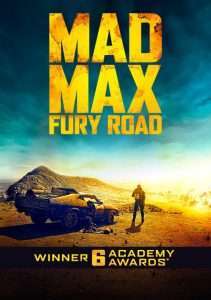 The premise of Mad Max: Fury Road is simple, and it’s better because it builds everything around its simplicity versus trying to bring people to something more complex. Immortan Joe (Hugh Keays-Byrne) is the dictator of a Wasteland community called the Citadel. He exploits and abuses his population, male as well as female, with the latter being forced to serve as his harem. His conspicuously female general, Imperator Furiosa (Charlize Theron), proceeds to help Joe’s slaves escape in hopes of taking them to a land called “The Green Place.” Max (Tom Hardy) gets caught up in this conflict the same way he’s caught up in every movie: he tries to do something selfish and ends up having to do something selfless.
The premise of Mad Max: Fury Road is simple, and it’s better because it builds everything around its simplicity versus trying to bring people to something more complex. Immortan Joe (Hugh Keays-Byrne) is the dictator of a Wasteland community called the Citadel. He exploits and abuses his population, male as well as female, with the latter being forced to serve as his harem. His conspicuously female general, Imperator Furiosa (Charlize Theron), proceeds to help Joe’s slaves escape in hopes of taking them to a land called “The Green Place.” Max (Tom Hardy) gets caught up in this conflict the same way he’s caught up in every movie: he tries to do something selfish and ends up having to do something selfless.
The first thing to know about Mad Max: Fury Road is it’s a fantasy film. This is a very odd thing to say but it’s a fantasy film in the science-fiction/fantasy sort of way. It’s not got magic or elves or so on but what really-really works for me is the fact this is a movie which is heavily invested in transporting you into another universe. Mad Max: Beyond Thunderdome gets a lot of flack for mostly justified reasons but part of why I’ll always defend that movie is the director was heavily invested in the world-building and you can tell that’s the same case here.
There’s a scene early in Mad Max: Fury Road where Immortan Joe has a big “Hitler cam” moment where he goes out onto a balcony before thousands of starving subjects holding up jugs and plates before spouting a bunch of pseudo-mystical nonsense before he proceeds to pull on a chain which causes the people below to be showered in water for a few seconds. He then tells them not to become addicted to water. That’s one of the defining moments of the movie for me because it pretty much spells out how this society works, what kind of leader Joe is, and what sort of story we’re going to get.
Indeed, you also get a bunch of insight into how Immortan Joe runs his society in a way which people have been commenting on in the whole “is this film feminist or misogynist?” Joe takes the most attractive women as breeders and then raises the young boys to be his suicidal death-seeking soldiers. Joe teaches them that they’ll go to Valhalla when they die and that a worthy death is the only thing they’re good for.
I’m not so sure the villains are misogynist so much as generically evil with misogyny as just aspect of their cruelty. The young men are exploited every bit as much as the women in Joe’s society. I inferred Joe is getting rid of young rivals for both women as well as position in his society (dominated by old men like himself) by sending the “War Boys” off to die. It’s not hard to see social satire with the parallels on suicide bombers and terrorist groups not even subtext at points. But, then again, you just have to look around the world to know pointing out “treating women as property only good for breeding is bad” is something which needs to be said–even if it shouldn’t have to be.
The thing is, almost all the world-building is done with a minimum of dialogue. I think the movie is about an hour-and-a-half-of action with about thirty minutes of non-action, of which only some is necessarily talking. The actual dialogue scenes aren’t even that important as far as I can tell, with the vast-vast majority of storytelling done visually. This is one of those movies you could honestly argue could be done without any of the characters speaking at all. That doesn’t mean the plot isn’t there but it’s not a movie where Max will open up about his wife and child’s death nor where we gain any insight into how Furiosa got her cybernetic arm.
The movie is one I would say is feminist but I’m, honestly, of the mind that much of the asshat objection to the film boils down to dislike of women and men being treated as equals in an action movie. Furiosa and the wives are major characters, the main ones arguably, but Max as well as Nux (the “good” War Boy) are every bit as important. If Fury Road gets this kind of reception, I can’t help but think the heads of geeks will explode if the Black Widow was joined by a second woman on the Avengers. Yeesh.
I liked the characterization we get in the movie, ranging from the aforementioned heroes down to the various Wasteland tribes which exist to harass our heroes. However, a staggering amount of this movie feels like its a triumph of style over substance. It’s good style, don’t get me wrong. I cannot fault a movie including an eyeless heavy-metal guitarist traveling on a car-mounted stereo-system which shoots flames.
Why is it in there? Because it’s looks cool dammit! Which is the justification, I suspect, for about ninety-percent of Mad Max: Fury Road. This movie, indeed, feels very much like someone’s post-apocalypse role-playing game session, including the whole, “well, the original plan is shot to hell, time to come up with a new one.”
Mad Max: Fury Road a movie which begins and ends on its action sequences, which are spectacular don’t get me wrong. I found all of the heroes likable and understandable. Plus, I found the wives pleasant to look upon if I may forego part of the movie’s point. I’m not going to say it’s something which revolutionizes my love of cinema, though. Instead, it’s more notable for me in the fact it used Mad Max to do some social commentary as well as to challenge the current reliance on CGI over practical effects.
And I had fun.
The post REVIEW: Mad Max: Fury Road appeared first on Grimdark Magazine.
June 9, 2025
REVIEW: The Price of Power by Michael Michel
Michael Michel’s The Price of Power is a thick, multi-POV tome for fans of Joe Abercrombie’s First Law Trilogy and George R.R. Martin’s A Song of Ice and Fire. With an emphasis on character building, The Price of Power is an intricate, slow-burning, morally grey book one.
“A trail of dark footprints followed them. Imprints of the past. Little graves waiting to be filled.”
It’s impossible to talk about this book without praising its character work. Every single person we’re introduced to feels real, fresh, and deeply human. The side characters, whether they’re there for a single page or a hundred, feel razor sharp, but The Price of Power’s true money-maker is its four main POVs.
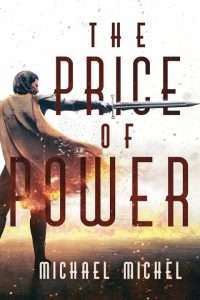 You have Barodane Ironlight, a guilt-ridden, drug-dealing prince living in self-imposed exile; Ishoa Ironlight, a young princess going through trials and politics while trying to decide between love and duty; Thephos, a man on a suicidial mission that will either end in death or power; and Locastrii, a grandmother who is creating the world’s savior.
You have Barodane Ironlight, a guilt-ridden, drug-dealing prince living in self-imposed exile; Ishoa Ironlight, a young princess going through trials and politics while trying to decide between love and duty; Thephos, a man on a suicidial mission that will either end in death or power; and Locastrii, a grandmother who is creating the world’s savior.
I don’t think there’s much disagreement that The Price of Power’s standout character is Barodane Ironlight. Michel’s writing of the character jumps off the page and drags you into a dingy drug den with him. The regret, self-hate, and self-imposed futility of his character is both heart-breaking and jaw-dropping. While the other POVs have some great moments and some banger lines, Barodane chapters are an absolute treat and leave you craving more of him.
While each POV in The Price of Power is unique, interesting, and the voices are fresh, they do frequently feel disjointed. You can see the themes and world-building that tie Barodane and Ishoa together, but the others often feel like they’re in their own world. Ultimately, this wasn’t an issue for me as the writing was strong enough to make me buy into each character, but less patient readers may pause and wonder “why are we with this character?”
“He looked at his hands. Weak. Capable of burying brothers but too weak to kill fathers.”
While The Price of Power’s main strength is its character work, the prose and the action both deserve special shout outs. Michel has a talent with prose that reminds me of Richard K. Morgan and Mark Lawrence. It’s pretty, but never overly so, and it’s always fresh and engaging. This is a thick, slow-burning book, and Michel’s prose keeps you moving.
The action may be rare in this tale, but it’s viciously and viscerally portrayed. It’s bone-crunching, it’s blood-letting. You can feel the impact of maces and axes, you can feel the slicing of swords. All around elite stuff.
At the end of the day, I adore this book. It’s a thick slow-burn, so buyer beware, but if you want a thoroughly crafted tome with an emphasis on character work ala Joe Abercrombie from one of indie fantasy’s most exciting voices, pick up The Price of Power.
Read The Price of Power by Michael MichelThe post REVIEW: The Price of Power by Michael Michel appeared first on Grimdark Magazine.
June 8, 2025
REVIEW: Conan the Barbarian Free Comic Book Day 2025: Scourge of the Serpent
The 2025 Free Comic Book Day issue of Conan the Barbarian is set shortly after the beginning of his adventuring career. Though the Cimmerian is only 17, already he has participated in the Sack of Venarium and then fallen in with a raiding party in the frozen north. After an uncanny close encounter with the divine (as seen in the “Frozen Faith” storyline, concluding in Conan the Barbarian issue #18), the youth ventures south towards warmer climes and his earliest encounters with the “civilized” world. He promptly becomes a thief, using his remarkable muscle and agility to enrich himself at the expense of the soft city-dwellers of Numalia. His latest heist turns out to be a bust, however, when he breaks into the manor house of Aztrias Petanius, nephew to the city-state’s governor. Not only is he caught in the act, but it turns out Petanius doesn’t have any gold to steal: the dissolute fop has run up massive gambling debts and been cut off by his uncle. Just as Conan is about to cut his losses and withdraw, Petanius attempts to sweet-talk Conan into another burglary, one that promises to both mollify the frustrated barbarian and wipe out Petanius’ debt.
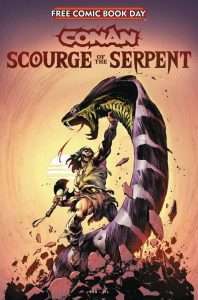 Like the 2024 Free Comic Book Day issue, which acted as the prelude to last year’s “Battle of the Black Stone” miniseries, this issue sets the stage for this autumn’s “Scourge of the Serpent” spin-off. Hints about another epoch-spanning crossover involving other characters penned by Conan creator Robert E. Howard are dropped in the final pages of the issue, and in his closing essay pulp fiction scholar Jeffrey Shanks helpfully lays out the plan for the event. As fans familiar with the original source material have likely recognized, the Conan story will be an adaptation of “The God in the Bowl” (the climax of which was glimpsed in Conan the Barbarian #20). Interestingly, that tale will be interwoven with a comic book treatment of “The Shadow Kingdom,” a classic 1929 Sword & Sorcery adventure starring King Kull and Brule the Spear-Slayer. Finally, the “Scourge of the Serpent” will also incorporate “The Haunter of the Ring,” a 1934 occult horror tale featuring Professor John Kirowan (last seen in Conan the Barbarian: Battle of the Black Stone #4). While Jim Zub’s repeated tendency to shoehorn crossover events into Conan the Barbarian still feels like a storytelling device better left to superhero comics, the story choice here is admittedly intriguing. “The God in the Bowl” is a fun story, but one of the weaker Conan tales; augmenting an adaptation of that with additional material seems like a wise decision. “The Shadow Kingdom” is perhaps the best Kull story, to the extent that which I’m surprised they would use it here, rather than reserve it for a future standalone King Kull comic title. Finally, “The Haunter of the Ring” is one of the more obscure Howard stories, but even in its original form it includes a built-in connection to Conan’s Hyborian Age. While simultaneously weaving together three adaptations feels ambitious, the more limited cast of characters should help “Scourge of the Serpent” avoid the overstuffed feeling of “Battle of the Black Stone.”
Like the 2024 Free Comic Book Day issue, which acted as the prelude to last year’s “Battle of the Black Stone” miniseries, this issue sets the stage for this autumn’s “Scourge of the Serpent” spin-off. Hints about another epoch-spanning crossover involving other characters penned by Conan creator Robert E. Howard are dropped in the final pages of the issue, and in his closing essay pulp fiction scholar Jeffrey Shanks helpfully lays out the plan for the event. As fans familiar with the original source material have likely recognized, the Conan story will be an adaptation of “The God in the Bowl” (the climax of which was glimpsed in Conan the Barbarian #20). Interestingly, that tale will be interwoven with a comic book treatment of “The Shadow Kingdom,” a classic 1929 Sword & Sorcery adventure starring King Kull and Brule the Spear-Slayer. Finally, the “Scourge of the Serpent” will also incorporate “The Haunter of the Ring,” a 1934 occult horror tale featuring Professor John Kirowan (last seen in Conan the Barbarian: Battle of the Black Stone #4). While Jim Zub’s repeated tendency to shoehorn crossover events into Conan the Barbarian still feels like a storytelling device better left to superhero comics, the story choice here is admittedly intriguing. “The God in the Bowl” is a fun story, but one of the weaker Conan tales; augmenting an adaptation of that with additional material seems like a wise decision. “The Shadow Kingdom” is perhaps the best Kull story, to the extent that which I’m surprised they would use it here, rather than reserve it for a future standalone King Kull comic title. Finally, “The Haunter of the Ring” is one of the more obscure Howard stories, but even in its original form it includes a built-in connection to Conan’s Hyborian Age. While simultaneously weaving together three adaptations feels ambitious, the more limited cast of characters should help “Scourge of the Serpent” avoid the overstuffed feeling of “Battle of the Black Stone.”
Artist Ivan Gil is a newcomer to Conan the Barbarian, but I look forward to seeing more Conan material by him. His character work in this issue is superb. His Conan is brawny, but he captures the panther-like agility that so many other artists regrettably deemphasize. His Conan also looks appropriately young; hardened by his barbarian upbringing, but still youthful and new to the ways of the civilized world. Gil’s supporting cast is likewise strong. While avoiding caricature-like exaggeration, the guards in Petanius’ manner are delightfully ugly in a characterful way. His background work with the furnishings in Petanius’ manor is intricately detailed, which gives me high hopes for the riches we’ll be shown within the vault of antiquarian Kallian Publico during “The God in the Bowl.”
For those who were unable to acquire Conan the Barbarian Free Comic Book Day 2025: Scourge of the Serpent from their local comic store, a digital edition is available directly from Titan Comics. This issue is an enjoyable read for current fans of the series, but it’s also an excellent place to pick up the series. There’s no encumbering backstory to absorb, just a young barbarian with a sword looking to hit it rich and ominous hints of sinister forces lurking in the background.
Read Conan the Barbarian Free Comic Book Day 2025: Scourge of the SerpentThe post REVIEW: Conan the Barbarian Free Comic Book Day 2025: Scourge of the Serpent appeared first on Grimdark Magazine.
June 7, 2025
REVIEW: Midnight Tides by Steven Erikson
Steven Erikson’s Midnight Tides is a book that starts with a sigh and ends with tears. Philosophical as ever, Erikson’s fifth entry in Malazan: Book of the Fallen takes us to a new continent with a new batch of characters. Through brilliant dialogue and awe-inspiring world-building, Midnight Tides stands as one of the best novels in Malazan, meaning that it stands as one of the best novels in fantasy as a genre.
“We have a talent for disguising greed under the cloak of freedom. As for past acts of depravity, we prefer to ignore those. Progress, after all, means to look ever forward, and whatever we have trampled in our wake is best forgotten.”
Erikson has always asked for a lot from his readers. There has to be a willingness to subject yourself to confusion, to mystery. He asks that you put your faith in him, or, as his fans says “RAFO” (Read And Find Out). While it’s true that his novels use complexity to the highest extent, Erikson always delivers the reader to dazzling climaxes and a feeling of wonder.
Midnight Tides is the most on-brand example.
Between the first four tales of Malazan, we’ve alternated between two continents, thousands of characters, and a world we are only beginning to get a larger understanding of. Erikson then says “we’ll come back to all of that” and introduces yet another continent, complete with its own religious systems, economy, factions, characters, and everything else. Erikson’s master of anthropology and civilization truly shines here, and the world we’re shown here is rife with cool-yet-human concepts and harsh critiques.
Malazan does not have a true main character. You can, however, make arguments that certain books have main characters (Gardens of the Moon & Ganoes Paran; House of Chains & Karsa Orlong) and Midnight Tides’ candidate for main character would be none other than Tehol Beddict.
Tehol is one of the most charming characters I’ve ever seen.
Midnight Tides, despite its darkness, has a certain breath of clever levity that Tehol breathes into the narrative, and I found myself constantly wanting more of him and his man-servant, Bugg. While the side characters in this novel are absolutely brilliant, Tehol (and Bugg, of course) carry the novel.
I don’t want to merely gloss over the side characters in Midnight Tides, only to stress the level of importance, and lovability, of Tehol Beddict. With that underlined and highlighted, I have to give an equally excited shout out to the rest of the cast. Rhulad, Brys, Udinaas, Trull … it’s incredible the amount of character work Erikson weaves into Midnight Tides while building a truly complex and layered society.
“Money’s just an idea, it has power. Only it’s not real power. Just the promise of power. But that promise is enough so long as everyone keeps pretending it’s real. Stop pretending and it all falls apart.”
The core plot took a little while for me to buy into. It’s dark, it’s a critique on society, it’s familiar yet totally foreign. We don’t have the characters we’ve come to grow and love, and it feels like we’ve been dropped off at an after-school daycare instead of being in the home we know and love.
There’s two main driving factions: one with Letheras, a capitalistic society, and one with the changing leadership of the Tiste Edur after certain events force a new ruler. Of course, Erikson’s side characters have their own motivations and gods run amok in the converging chaos, but the bulk of Midnight Tides hinges upon those two societies and how they react to changing landscapes. There is a certain slowness to buy in, but I don’t know if that hesitancy is a personal issue or a structural one. Ultimately, it doesn’t matter, as it’s something that was overcome and washed away, like the tides. I apologize for this pun/metaphor.
“Oh, we talk of progress, but what we really desire is the perpetuation of the present. With its seemingly endless excesses, its ravenous appetites. Ever the same rules, ever the same game.”
All in all, Midnight Tides is one of Erikson’s best works. I cannot overstate the skill demonstrated in the dialogue and the character work. The action is scintillating, and the ending … tragic, yet incredible.
If you’re reading this review because you didn’t love House of Chains, I am telling you to put your trust in Erikson and embark on this journey.
P.S. Check out Marc Simonetti’s version of Midnight Tides–unbelievably gorgeous cover.
Read Midnight Tides by Steven Erikson
The post REVIEW: Midnight Tides by Steven Erikson appeared first on Grimdark Magazine.
June 6, 2025
REVIEW: War Cry by Ian Ross
Last month, I eagerly picked up War Cry, the second instalment of the de Norton trilogy by Ian Ross, from the bookshop across the road from my workplace. The reason for my enthusiasm was its predecessor, Battle Song, which I’d devoured towards the end of 2023. Battle Song was the best historical adventure I’d read in ages, even eclipsing Dan Jones’ Essex Dogs.
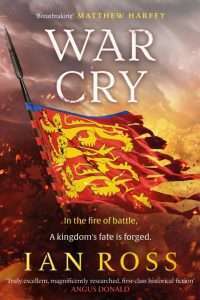 Battle Song was a masterful novel which should have made Ian Ross an international bestseller-topping, household name on par with the likes of the late Hilary Mantel. This first instalment tells the story of the baronial revolt led by Simon Montfort against King Henry III. More importantly, it contained language so immersive that it was intoxicating, as well as characters better sculpted than a Renaissance statue in Florence, all the while blending historical fact and character journeys with the greatest intelligence. I loved the convincing way in which Ross painted the unlikely union of the profiteering, canny knight Robert de Dunstanville and his valorous yet naive squire Adam de Norton, as the two seek their fortunes along the tourney circuit in England and the Continent, prior to securing their futures in a highly dangerous civil war.
Battle Song was a masterful novel which should have made Ian Ross an international bestseller-topping, household name on par with the likes of the late Hilary Mantel. This first instalment tells the story of the baronial revolt led by Simon Montfort against King Henry III. More importantly, it contained language so immersive that it was intoxicating, as well as characters better sculpted than a Renaissance statue in Florence, all the while blending historical fact and character journeys with the greatest intelligence. I loved the convincing way in which Ross painted the unlikely union of the profiteering, canny knight Robert de Dunstanville and his valorous yet naive squire Adam de Norton, as the two seek their fortunes along the tourney circuit in England and the Continent, prior to securing their futures in a highly dangerous civil war.
Throughout the first instalment, Ross convincingly portrays Robert and Adam as formidable fighters but also endearing rascals, men using both their wits and their martial skills to rise in an unforgiving, cruel world. So that I found myself quickly warming to the descriptions and motivations of de Dunstanville and his motley crew; I could fully understand why Adam would eventually want – despite perfectly realised initial reluctance – to form part of the band. They were characters that were perfect in their strengths and imperfections, also backed by an excellent cast of secondary characters and nemeses like Malmaines and De Brock who eliminated any sense of tedium from the referenced historical events. All of which led me to feel like I was journeying with the characters every step of the way, right until the final, dramatic standoff.
As for the second instalment: it started very brightly, with the usual excellent use of language that Ross employs, combined with a great sense of danger and uncertainty, as Adam secures his father’s lands accorded to him by the new, de facto ruler of England. For a few pages in, it appeared that the amusing Welshman, Hugh of Oystermouth, would step up and help make War Cry highly engaging, only to disappear from the scene all too swiftly, along with Robert de Dunstanville who made a brief cameo. Thereafter, I found that the story turned from an upward sprint into a weary limp, as Adam goes from pursuing a woman he’s not wholly in love with to serving Montfort again, against Robert’s advice. There follow a couple of interesting twists and turns, involving a siege and a flown prince, yet what first appeared to be a promising sequel started to quickly lose the momentum built by its predecessor, as a forbidden love thread becomes ground down by the slow progress of Montfort’s army as it desperately seeks to tie up a fast unravelling, loose end, with tragic consequences.
The last third of War Cry just did not possess any characters or unexpected twists to lend it the immediacy or the personal stakes of its predecessor – with one character in particular reappearing and being eliminated far too quickly, especially when one considers that this character was previously so compelling because of his ability to read political headwinds and pick the side that best suited him personally. How this same character – who so cleverly cut corners and effortlessly revealed the cynical side of chivalry to young Adam in Battle Song – suddenly elects to throw it all away in an unwinnable conflict, mainly because of social perceptions, was somewhat hard to buy. I also question whether the outrages committed against the Jews by Montfort’s men in book one (which Montfort himself profited from) might have justified, for the reader at least, Robert and Adam throwing their lot in with a charismatic Prince Edward’s cause, or simply sitting out the final conflict entirely? And while it was great that Montfort was such an enigmatic character in book one, I felt that further teasing out his motivations and personality in this sequel would have been a good approach, especially when one considers that both Robert and Adam are ready to give up everything for him.
I will probably pick up the third book in the trilogy, both due to my curiosity and the fact that Ian Ross’ command of language is a great joy to experience when combined with his historical knowledge. Yet – unless I’m missing something and soon to eat humble pie after reading the third instalment – I can’t shake off the feeling that the structure and character motivations of this number could have been truer to its predecessor’s. So it’s 3/5 stars for me, which given Ross’ world-beating quality of writing should probably be a 4, were it not for the unparalleled excellence and sky-high expectations set by the timeless classic, Battle Song.
Read War Cry by Ian RossThe post REVIEW: War Cry by Ian Ross appeared first on Grimdark Magazine.
June 5, 2025
REVIEW: Andor Season 2
Star Wars. Stories of good versus evil set in a world designed to sell toys to kids. Swords that light up, guns firing lasers, aliens, princesses and more. Not exactly grimdark, right? A prequel series to a prequel film of the beloved original trilogy, Andor S2 may be the best thing to have ever come out of the Star Wars universe and for fans of grimdark, this is a must-see series.
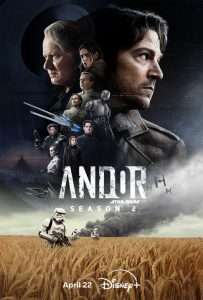 Following on from the brilliant and dark first season, Andor S2 follows Cassian Andor as he tries to find his place in the growing rebellion against the evil Empire who are slowly tightening their grip on the numerous worlds in their control. Set four years before the events of Rogue One, the series chronicles Andor’s transformation into an integral part of the rebellion with three-episode arcs representing a year in his life. This approach allows deep exploration of the characters within the series and a chance to see the way in which the rebellion grows in the shadow of the Empire. It also allows viewers the witness the ways in which the powerful can get away with atrocities in small steps using propaganda and control of the media. This is Star Wars at its most mature and developed as we see tension build between cliques within both the Empire and the rebels. No one knows who they can trust and there is a weight to their actions with death being a very real consequence in this story. The story focuses heavily on the plight of Ghorman, a world being mined by the Empire for their resources for an as yet, unknown project. The clothing, language, music, and whole atmosphere of the show calls back to moments in history when countries have been invaded and colonised but fought back with resilience and hope. Episode 8 in particular is a beautiful and devastating episode that stayed with me long after the credits rolled. It is dark and gritty but laced with hope throughout, even during the darkest of times. I never thought Star Wars would be allowed to go this dark but they allowed it and have created something greater than anything that has come before. The weight of episode 8 left me thinking that the rest of the season would struggle to reach such a peak but every episode following continues the excellent standard and finished with me knowing that I had watched one of the best TV series ever – not just in the Star Wars universe.
Following on from the brilliant and dark first season, Andor S2 follows Cassian Andor as he tries to find his place in the growing rebellion against the evil Empire who are slowly tightening their grip on the numerous worlds in their control. Set four years before the events of Rogue One, the series chronicles Andor’s transformation into an integral part of the rebellion with three-episode arcs representing a year in his life. This approach allows deep exploration of the characters within the series and a chance to see the way in which the rebellion grows in the shadow of the Empire. It also allows viewers the witness the ways in which the powerful can get away with atrocities in small steps using propaganda and control of the media. This is Star Wars at its most mature and developed as we see tension build between cliques within both the Empire and the rebels. No one knows who they can trust and there is a weight to their actions with death being a very real consequence in this story. The story focuses heavily on the plight of Ghorman, a world being mined by the Empire for their resources for an as yet, unknown project. The clothing, language, music, and whole atmosphere of the show calls back to moments in history when countries have been invaded and colonised but fought back with resilience and hope. Episode 8 in particular is a beautiful and devastating episode that stayed with me long after the credits rolled. It is dark and gritty but laced with hope throughout, even during the darkest of times. I never thought Star Wars would be allowed to go this dark but they allowed it and have created something greater than anything that has come before. The weight of episode 8 left me thinking that the rest of the season would struggle to reach such a peak but every episode following continues the excellent standard and finished with me knowing that I had watched one of the best TV series ever – not just in the Star Wars universe.
Diego Luna is compelling as Cassian Andor. You can see that he is burdened with the weight of the choices he makes and the impact it has on those around him. This is a career defining role for him. Andor S2 is filled with stunning performances. Genevieve O’Reilly as Mon Mothma portrays the personal sacrifices needed to fight a rebellion and her performance adds a level of depth needed to pull of the political side of the series whilst Stellan Skarsgard as spymaster Luthen Rael is an absolute standout as he embodies the moral complexities that come with leadership in a time of war and rebellion. There are so many more powerful performances I can mention and the writing is some of the best seen in this world. Every episode is packed with excellence and it forces the reader to pay attention. This isn’t a show that spoon feeds its viewers information. It is a truly mature piece of work and whilst I am surprised that something under the Disney banner has been allowed to be so dark and mature, I am so happy it has been.
Andor S2 is not just one of the best works in the Star Wars universe, it is one of the best TV series of the past decade. It is gritty, mature, and treats its audience with intelligence. You don’t have to be a Star Wars fan to appreciate this brilliant series, although it does help. Power, corruption, genocide, war, rebellion – Andor S2 has it all. This is the darkest Star Wars has ever been but there is always hope. Watch season 1 and 2 and then pop on Rogue One – you can thank me later.
The post REVIEW: Andor Season 2 appeared first on Grimdark Magazine.

